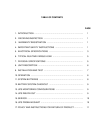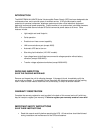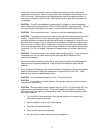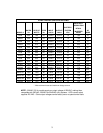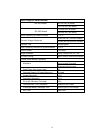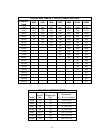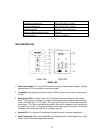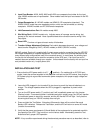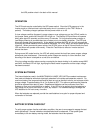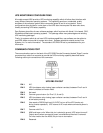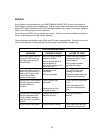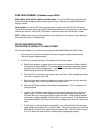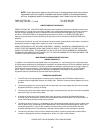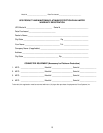
7
6.
Input Fuse/Breaker
: A300, A425, A900 and A1250 use a separate fuse holder for the input
fuse; A2000 models use an input breaker. Other models have the input fuse located in the IEC
320 socket.
7.
Output Receptacles
: All 120VAC models use NEMA 5-15R receptacles (standard). The
A2000 120VAC model has one receptacle position, which can be converted, to a locking
receptacle. 220VAC models use IEC 320 female receptacles.
8.
LAN Communications Port
: All models except A300.
9.
Site Wiring Fault
: 120VAC models only. Indicator warns of improper service wiring, lost
ground or hot/ neutral reversed. Have a qualified electrician correct the service wiring if this
lamp lights.
10.
Boost LED:
On when unit goes to boost mode; off otherwise.
11.
Transfer Voltage Adjustment Switches
: Each switch decreases brownout, over-voltage and
boost transfer voltages by 5VAC (120VAC models) or 8VAC (220VAC models).
220VAC models: Each unit is supplied with 2 output power cords for connection from the UPS IEC
320 female receptacles to computer equipment. An input line cord is not provided because of the
many different plug configurations used in the countries served. In most cases, the existing input
line cord for the computer can be used for connection to the UPS input. If an input line cord is
needed, these are available through your supplier. Units ordered from the factory with an input line
cord provided contain only 1 output power cord.
INSTALLATION AND TEST
1. Ensure that the UPS power switch is off (" " position). On models with an IEC 320 input
socket, insert the cord-set supplied or the computer cord-set into the UPS socket, then plug the
UPS power plug into a grounded commercial power receptacle, with proper supply voltage and
frequency.
2. Leave the UPS plugged in, but turned off for two hours to permit the internal batteries to re-
charge. The charger operates when the UPS is plugged in, regardless of power switch
position.
3. Turn on the UPS power switch ("|" position) and it will immediately power up in the Inverter
(Backup) mode. If commercial power is available and within proper range, the UPS will transfer
to commercial power in about four seconds, and the AC Normal LED will light. Verify that the
site wiring fault lamp (on 120VAC models) does not light.
4. Press and hold the Test Button. After about 30 seconds, there will be a short Alarm and
Backup LED indication. Release the Test Button, and the UPS will return to normal AC mode
(in about four seconds).
5. Verify that the power requirements (VA and Watts) of the equipment to be protected are within
the capacity of the UPS. Plug in and turn on the various loads. Momentarily press the Test
Button and verify proper UPS operation.
NOTE:
If any condition experienced during the above test procedure was not as described, refer to




